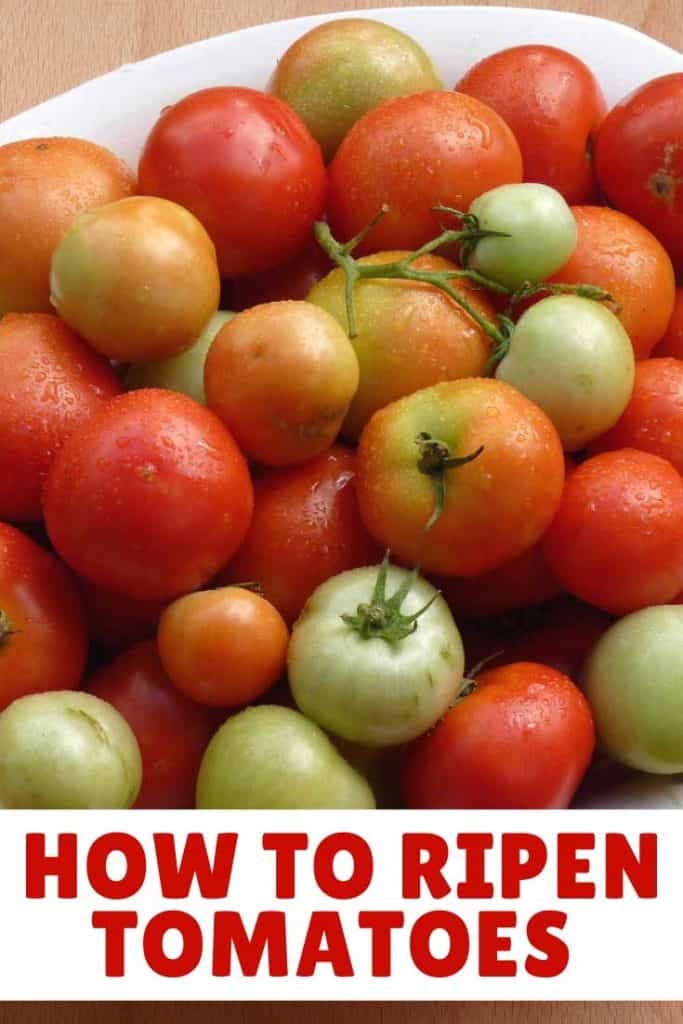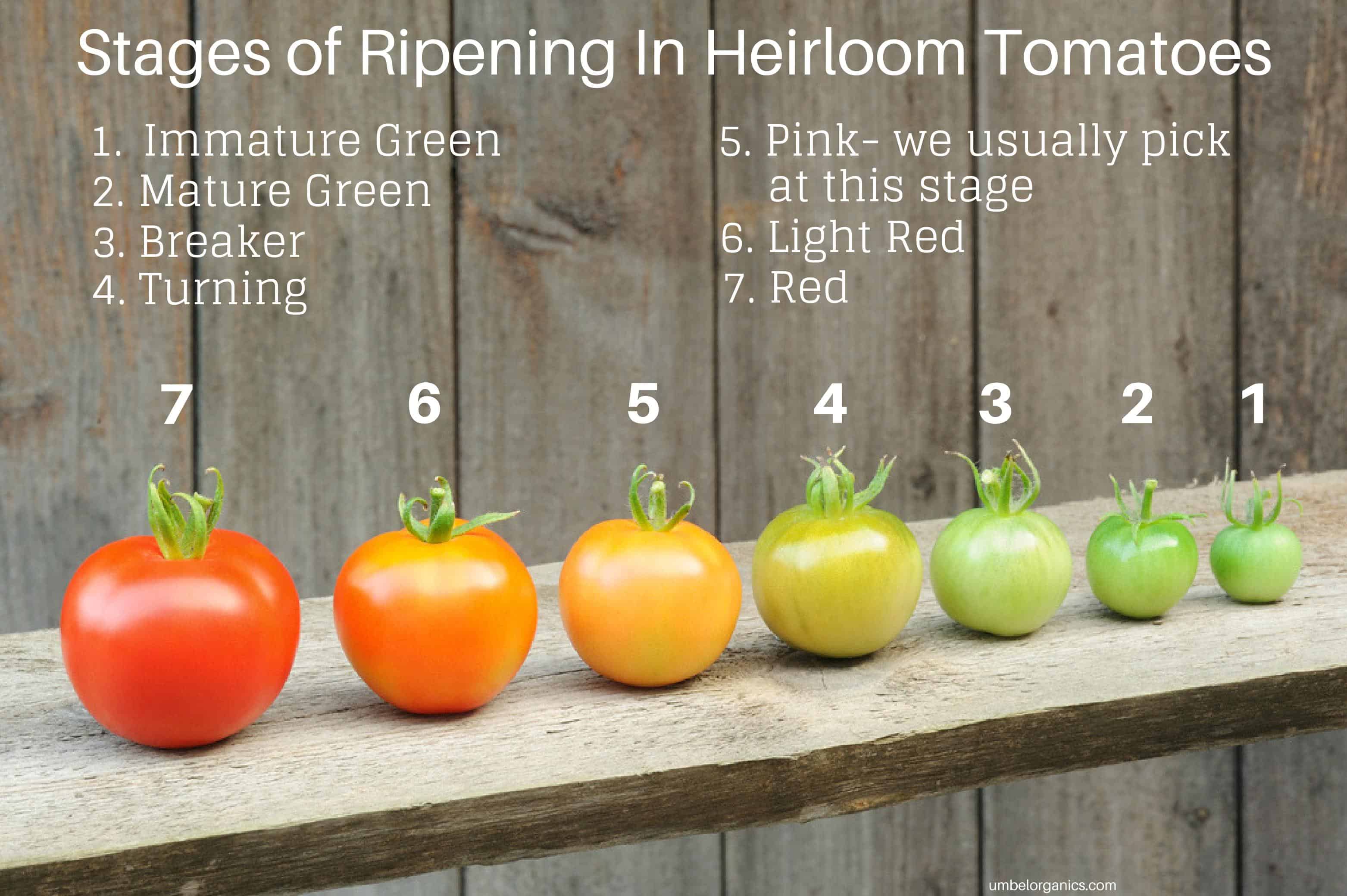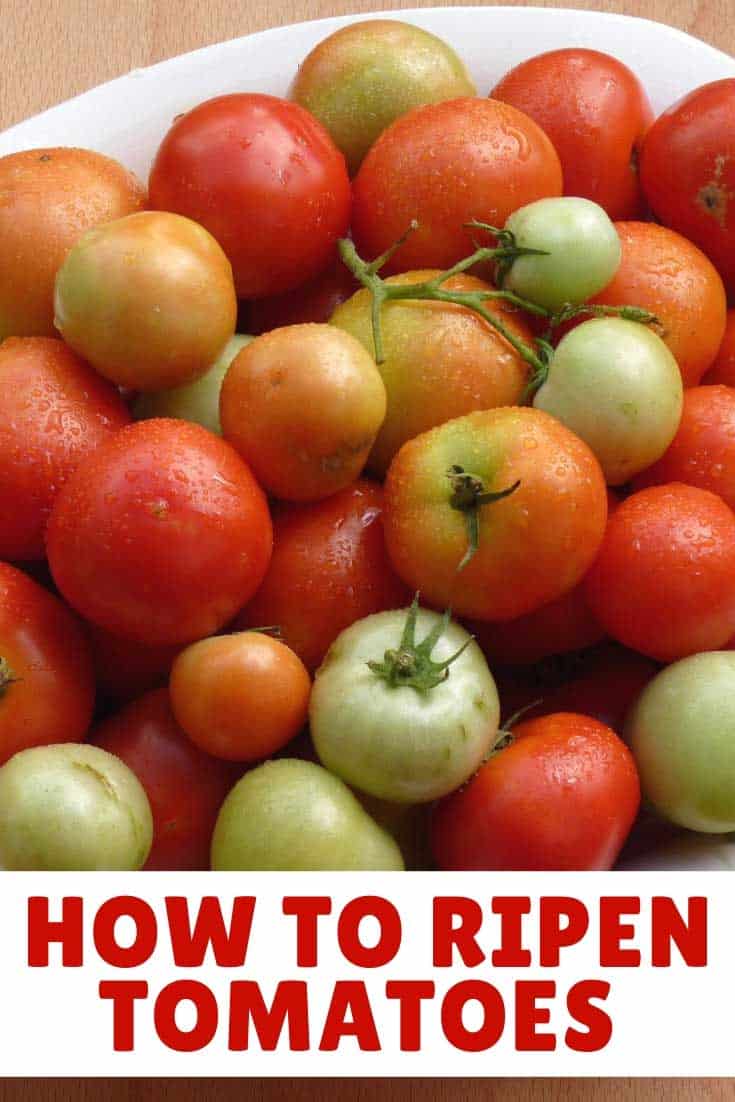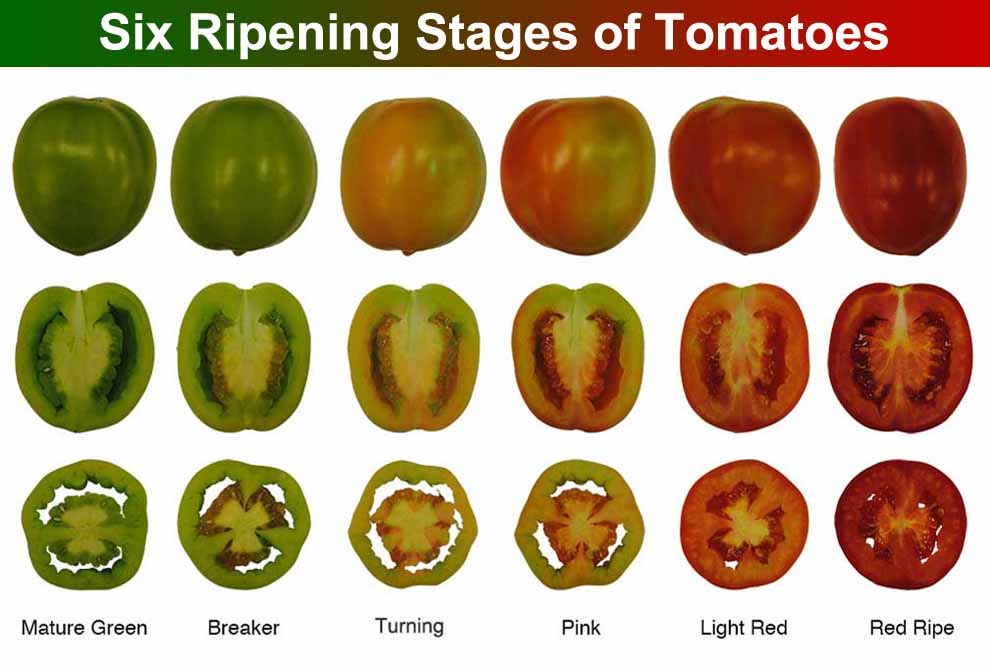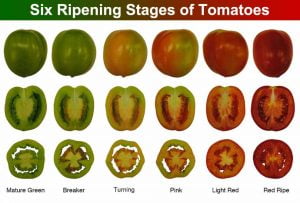The Science Behind Tomato Ripening
Tomato ripening is a complex process that involves a series of biochemical reactions. At the heart of this process lies the production of ethylene, a natural plant hormone that promotes fruit ripening. As tomatoes mature, they begin to produce more ethylene, which triggers a cascade of events that ultimately lead to ripening. One of the key effects of ethylene production is the breakdown of chlorophyll, the green pigment responsible for photosynthesis. As chlorophyll breaks down, the tomato’s natural color becomes visible, and it turns from green to red, yellow, or orange, depending on the variety. Another crucial aspect of tomato ripening is the conversion of starches into sugars. This process makes the tomatoes sweeter and softer, making them more palatable. Understanding the biological process of tomato ripening provides a solid foundation for learning how to speed up tomato ripening. By grasping the underlying biology, individuals can better appreciate the methods to speed up the process, ultimately leading to a more efficient and effective way to ripen tomatoes. This knowledge is essential for mastering the art of how to speed up tomato ripening, allowing individuals to unlock the secrets of rapid tomato ripening and enjoy fresh, ripe tomatoes all year round. With a deep understanding of the biological process, individuals can explore various methods to speed up tomato ripening, from optimizing environmental conditions to harnessing the power of ethylene, and discover the best approach for their specific needs.
Optimizing Environmental Conditions for Faster Ripening
When it comes to how to speed up tomato ripening, environmental conditions play a crucial role. Temperature, humidity, and light are all critical factors that can significantly impact the ripening process. To create an ideal environment for tomatoes to ripen quickly, it’s essential to understand the optimal conditions for each of these factors. In terms of temperature, tomatoes typically ripen best between 65°F and 70°F (18°C and 21°C). Temperatures above 75°F (24°C) can actually slow down the ripening process, while temperatures below 55°F (13°C) can cause the tomatoes to ripen unevenly. Humidity is also important, as tomatoes need a certain level of moisture to ripen properly. A humidity level of 80-90% is ideal, and can be achieved by placing the tomatoes in a paper bag or ripening bag. Finally, light also plays a role in tomato ripening, although it’s not as critical as temperature and humidity. Tomatoes can ripen in low light conditions, but direct sunlight can actually cause them to ripen more quickly. By optimizing these environmental conditions, individuals can create an ideal environment for tomatoes to ripen quickly, and learn how to speed up tomato ripening effectively.
The Power of Ethylene: How to Harness It for Faster Ripening
Ethylene is a natural plant hormone that plays a crucial role in tomato ripening. As tomatoes mature, they begin to produce more ethylene, which triggers a series of biochemical reactions that ultimately lead to ripening. By harnessing the power of ethylene, individuals can learn how to speed up tomato ripening effectively. One way to do this is by using ethylene-producing fruits like apples or bananas. These fruits produce high levels of ethylene, which can be used to stimulate the ripening process in tomatoes. To use this method, simply place the tomatoes in a bag or container with the ethylene-producing fruit and seal it. The ethylene produced by the fruit will help to stimulate the ripening process in the tomatoes, allowing them to ripen more quickly. This method is a simple and effective way to learn how to speed up tomato ripening, and can be used in conjunction with other methods to achieve optimal results. By understanding the role of ethylene in tomato ripening and learning how to harness its power, individuals can unlock the secrets of rapid tomato ripening and enjoy fresh, ripe tomatoes all year round.
How to Use Ethylene-Producing Products to Ripen Tomatoes
In addition to using ethylene-producing fruits, there are also commercial products available that can help to speed up the tomato ripening process. Products like Ethylene Gas or Ripen-It are specifically designed to produce ethylene, which can be used to stimulate the ripening process in tomatoes. These products are often used in commercial settings, but can also be used by individuals looking to learn how to speed up tomato ripening at home. To use these products effectively, it’s essential to follow the manufacturer’s instructions carefully. This may involve placing the tomatoes in a sealed bag or container with the ethylene-producing product, and then storing them in a warm, dry place. The ethylene produced by the product will help to stimulate the ripening process, allowing the tomatoes to ripen more quickly. By using these products in conjunction with other methods, such as optimizing environmental conditions and maintaining optimal water and oxygen levels, individuals can learn how to speed up tomato ripening and enjoy fresh, ripe tomatoes all year round. With the right techniques and tools, it’s possible to ripen tomatoes quickly and efficiently, without sacrificing quality or flavor.
The Role of Water and Oxygen in Tomato Ripening
Water and oxygen are two essential components that play a crucial role in the tomato ripening process. Maintaining optimal water levels and oxygen circulation is vital to promote faster ripening and prevent spoilage. Tomatoes need a consistent supply of water to ripen properly, as water helps to break down the cell walls and convert starches into sugars. However, excessive water can lead to rot and spoilage, so it’s essential to strike a balance. To maintain optimal water levels, tomatoes should be stored in a cool, dry place with good air circulation. This will help to prevent moisture from accumulating and promote healthy ripening. In addition to water, oxygen is also essential for tomato ripening. Oxygen helps to stimulate the production of ethylene, which is a natural plant hormone that promotes ripening. To promote optimal oxygen circulation, tomatoes should be stored in a well-ventilated area, away from direct sunlight and heat sources. By maintaining optimal water levels and oxygen circulation, individuals can learn how to speed up tomato ripening and enjoy fresh, ripe tomatoes all year round. By combining these techniques with other methods, such as optimizing environmental conditions and using ethylene-producing products, individuals can create an ideal environment for tomatoes to ripen quickly and efficiently.
Using Heat to Ripen Tomatoes: A Guide
Heat is a powerful tool that can be used to speed up the tomato ripening process. By applying gentle heat, tomatoes can be coaxed into ripening more quickly, without sacrificing flavor or texture. However, it’s essential to use heat carefully, as excessive heat can damage the tomatoes and prevent them from ripening properly. To use heat effectively, tomatoes should be stored in a warm, dry place with good air circulation. A temperature range of 65-70°F (18-21°C) is ideal for ripening tomatoes, as it promotes the production of ethylene and stimulates the ripening process. It’s also important to monitor the tomatoes closely, as they can quickly go from unripe to overripe if exposed to too much heat. By using heat in conjunction with other methods, such as optimizing environmental conditions and using ethylene-producing products, individuals can learn how to speed up tomato ripening and enjoy fresh, ripe tomatoes all year round. Additionally, heat can be used to rescue tomatoes that are not ripening properly, by stimulating the production of ethylene and promoting the ripening process. By understanding how to use heat effectively, individuals can unlock the secrets of rapid tomato ripening and enjoy a bountiful harvest of fresh, delicious tomatoes.
Monitoring and Maintaining Tomato Quality During Ripening
As tomatoes ripen, it’s essential to monitor their quality to ensure they remain fresh and flavorful. Regularly checking tomatoes for signs of spoilage, such as soft spots, mold, or a sour smell, can help prevent them from going bad. Tomatoes that are past their prime can be removed, and the remaining ones can be stored in optimal conditions to promote continued ripening. To maintain optimal storage conditions, tomatoes should be kept in a cool, dry place with good air circulation. This will help to prevent moisture from accumulating and promote healthy ripening. Additionally, tomatoes should be handled gently to prevent bruising and damage, which can slow down the ripening process. By monitoring tomato quality and maintaining optimal storage conditions, individuals can learn how to speed up tomato ripening and enjoy a bountiful harvest of fresh, delicious tomatoes. Furthermore, regular monitoring can help identify any issues that may be slowing down the ripening process, allowing individuals to make adjustments and optimize their methods for faster ripening. By combining regular monitoring with other methods, such as optimizing environmental conditions and using ethylene-producing products, individuals can unlock the secrets of rapid tomato ripening and enjoy fresh, ripe tomatoes all year round.
Common Mistakes to Avoid When Ripening Tomatoes
When it comes to ripening tomatoes, there are several common mistakes that can slow down or prevent the process altogether. One of the most critical mistakes is inadequate storage, which can lead to moisture accumulation and spoilage. Tomatoes should be stored in a cool, dry place with good air circulation to promote healthy ripening. Excessive handling is another mistake to avoid, as it can cause bruising and damage to the tomatoes, slowing down the ripening process. Additionally, failing to monitor tomato quality during the ripening process can lead to spoilage and waste. By regularly checking tomatoes for signs of spoilage and maintaining optimal storage conditions, individuals can avoid these common mistakes and learn how to speed up tomato ripening. Furthermore, using heat treatment improperly can also hinder the ripening process. It’s essential to use heat carefully, as excessive heat can damage the tomatoes and prevent them from ripening properly. By being aware of these common mistakes and taking steps to avoid them, individuals can optimize their methods for faster ripening and enjoy a bountiful harvest of fresh, delicious tomatoes. By combining these tips with other methods, such as optimizing environmental conditions and using ethylene-producing products, individuals can unlock the secrets of rapid tomato ripening and enjoy fresh, ripe tomatoes all year round.


